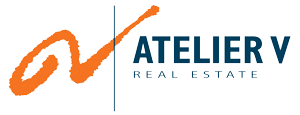
Continuous change
Not the initial architect, but time is the leading architect of our built environment. A building has to serve the continuously changing needs of its users.
Change is inescapable. Therefore, buildings should be co-designed to make them adaptive by the users and can evolve to stay functional and pleasant to be in.
Because the learning/work environment is dynamic and continuously evolving, a building is never perfect and finished. Therefore, it should be constantly aligned with the speed and changing needs of the user. The end is in sight when the rate of change outside exceeds the rate of change inside.
“Most of the time during the design phase ‘Form Follows Function’,
but during the in-use phase ‘Function Melts Form’.” (René Stevens)
Different parts of a building change at different rates to follow constantly changing user requirements. The learning/work environment is a solidified policy. When policy is modified, real estate becomes difficult to ‘liquify’ again. Regularly aligning real estate strategy with company policy makes timely anticipation possible. Most of the layers can be updated independently of the others, preventing the premature obsolescence of the building.
In addition to the six shearing layers of change that Steward Brand distinguishes in his book How Buildings Learn (1994), there are two more layers:
- Surroundings, such as nature, utilities and traffic infrastructure, landmarks, public transport and
- Social, the way building occupants organise their activities, work together, exchange ideas and the ‘inner environment’ of the people. It’s all about people. Make your organisation more human by bridging Real Estate and the Real State (mind, body, heart and spirit) of people.
The learning/work environment is a potential agent for change. By changing the environment, the users might be stimulated to think about adapting their activities and behaviour. There is no one-fits-all solution to achieve that because of different personalities, work styles and preferences. When there is an intervention in the learning/work environment, focus, therefore, on the common denominator of the needs of the different users. Such as choice and flexibility of how, when, and where to work, having a meaningful connection with the purpose of the organisation, the ability to grow and learn at work, and the expectation that the employer supports lifestyle and well-being.
When the rate of change outside exceeds the rate of change inside, the end is in sight.
If you want your building to be (more) adaptable to your needs and need a flexibility scan as evidence of your level of adaptative capacity, feel free to contact us. We would be privileged to develop a custom-made program for your organisation.
